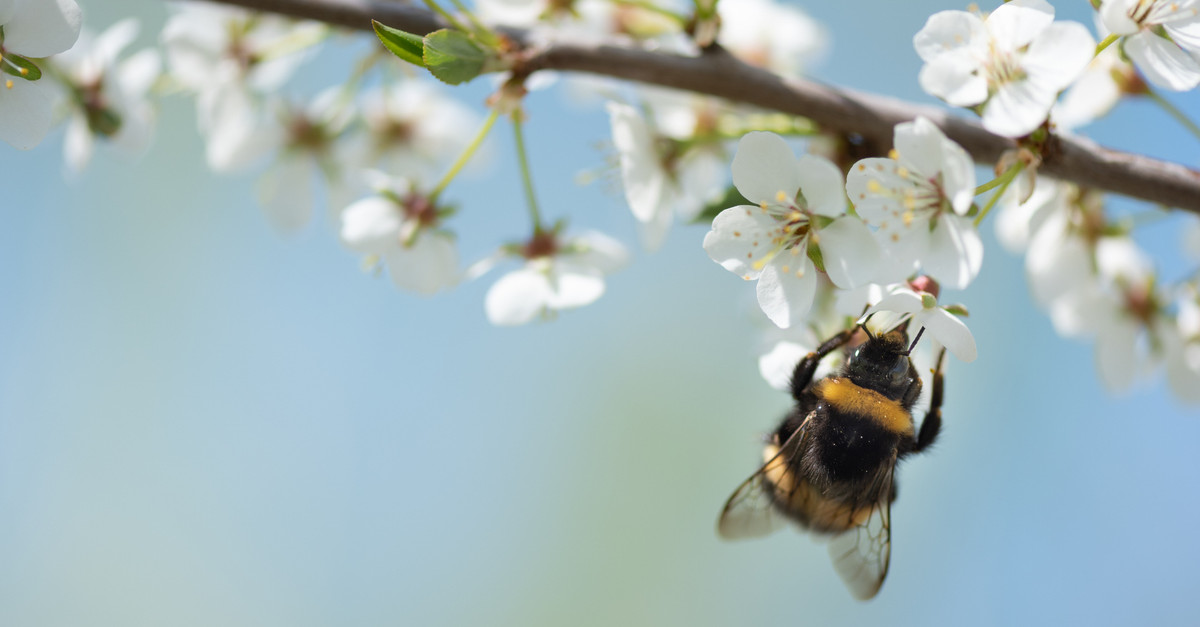The Best Trees for Bees and Pollinators
Providing shade, beauty, noise dampening, and breathable air… the perks trees provide for us seem to go on and on. But if you’re planting trees to benefit wildlife — such as our precious pollinators — well, we think you’re the bees’ knees.
Bees support up to 75% of flowering plants and 35% of crops grown across the globe through pollination, but factors like pesticides and loss of natural habitats have become a looming threat to these essential insects. Choosing to incorporate bee-friendly trees into your yard is one of the best ways to support them.
Here’s a closer look at the relationship between trees and pollinators, and the most beneficial varieties you can plant to help them thrive.
How Do Trees Support Bees and Other Pollinators?
Trees provide some of the most basic needs pollinators have for survival: food and shelter. Certain flowering trees offer sustenance through nectar and pollen, as well as the materials bees need to produce honey — the food that helps them survive the winter. And while flowers and shrubs do produce some blooms, trees often hold more weight when it comes to supporting insects. Because trees provide so many buds in one concentrated area, bees don’t have to travel far to get nourishment.
For certain bees, trees also offer up some buzz-worthy real estate. Cavity-nesting bees lay eggs inside the holes created by insect-chasing birds like woodpeckers, while tunnel-nesting bees drill directly into decaying branches. But even for the majority of bee species that live underground, having a windbreak in the form of thick tree screens can be helpful for staying on course.
As for other pollinators, trees offer habitats and sustenance for these species, too. Hummingbirds, butterflies, and beetles are just a few examples of the creatures who feed on nectar from flowering trees alongside bees. Bats and moths take refuge in shady trees as they rest by day, before their PM pollination begins after sunset. Another lesser known pollinator, ants, can also be found nesting in the nooks and hollows of mature trees. (Though sometimes, ant infestations are a sign that your tree is decaying — if that’s the case, give us a call, pronto!)
What Are the Best Trees for Bees and Other Pollinators?
An added bonus for planting bee-friendly trees: many of the species that attract these pollinators will bring added value to your property, too. For fewer trips to the farmer’s market, fruit trees like peaches, pears, cherries, and apples are an excellent landscape enhancement for drawing bees in. If aesthetics are your primary goal, flowering dogwoods and southern magnolia can add beauty and elegance while offering big perks for the pollinators.
Seeking a shady canopy? You can’t go wrong with a Japanese maple. Their large leaves will keep you cool all summer. And though their flowers won’t draw much attention (from the human eye — pollinators love them!), their spectacle of fall foliage is a sight to behold. Black Tupelo is another autumnal favorite, with flowers rich in the honey-making nutrients that will attract bees each spring.
Schedule a Pruning Service With Premier Tree Solutions
Any of the trees above will offer value for your yard and the surrounding wildlife for years to come, but maintaining them isn’t always easy. Many require precise pruning to support their shape and structural integrity, which is where our expertise comes in. Turn to Premier Tree Solutions for meticulous hand pruning, along with a host of other tree care and removal services. Request a free assessment today by sending us a message or by calling (404) 252-6448.










